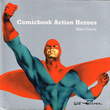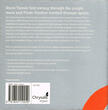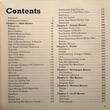500 Great Comic Book Action Heroes
Background
"500 Great Comicbook Action Heroes" was written by UK-based comic historian Mike Conroy. Originally published in the UK by Chrysalis books, it was subsequently re-released in the U.S. with new cover art.
This mini-encyclopaedia came out in 2002, capitalising on the success of books like DK Publishing's Spider-Man: The Ultimate Guide from the previous year. The same resurgence of interest in comic-book matters was reflected by Marvel's Marvel Encyclopedia series, and obviously also in the Sam Raimi Spider-Man film trilogy that began in 2002.
Story Details
500 Great Comic Book Action Heroes
| Publisher: | Chrysalis Books, Plc. |
| Writer: | Mike Conroy |
| Foreword: | Will Eisner |
The book is ambitious in scope, but compact in size. It is 7" x 7" and contains 376 pages in a chunky 0.8" thick package. It begins with a surprisingly detailed 42-page "History of Comicbook Action Heroes", before attempting to tackle 500 Heroes by splitting them into arbitrary chapters:
- Male Heroes
- Female Heroes
- Teams
- Newspaper Heroes
- War Heroes
- Western Heroes
- Sci-Fi Heroes
The History chapter is well-meaning. But it very quickly exposes the fundamental difficulty of the book. Too much information, too little space and structure. Mike launches into a detailed history of comic book heroes from 1929 (Tarzan & Buck Rogers), right up to the modern day in... 1975?
Yeah, there's the problem. Even cramping the content into a barely-digestible scrabble of facts and dates, Conway runs out of page space before he even gets to the 1980s. That means he doesn't even get to mention the gritty anti-heroes like Punisher and Spawn that re-animated public interest in comic books after the Silver Age fizzled out.
Once we get into the "encyclopaedia" part of things proper, it doesn't get much better. Fitting 500 heroes into the 300 small pages that remain is an impossible task. Most heroes don't even get a photo. Worse, the seven chapters overlap quite a bit, and there's no index. So searching for any particular character isn't particular simple.
The choice of "heroes" is equally questionable. Here's what we learn about "Black Hood III":
"Introduced in the 1991 Impact Christmas Special... [he] was an African-American named Hit Coffee. He was killed off in the first issue of [The Black Hood]."
Fascinating stuff. I'm sure his fictional mother loved him very much, and was heart-broken at his tragic demise. But does that truly qualify him as one of the "Great Comic Book Action Heroes"? I propose not.
General Comments
There's a ton of info in this book. Most of it is accurate. The problem is the selection, organisation and presentation of that information.
The book has tried to do far too much for the space available. A top 100 Heroes would have given a far better result. But in any case, the book is a muddle. The history chapter is a single-threaded ramble through 40 years of comic book history with very little supporting structure other than the occasional heading to break the monotony. There are no timelines, or diagrams, or bullet points or tables — a wall of text dominates all.
The same applies to the "character profile" entries. There's no structure within each entry. There are no statistics. A helpful summary for each character (e.g. publisher, first appearance issue, powers, home country etc.) would have made a world of difference in making the material more digestible.
The absence of per-profile images is an equally grievous omission. To try and describe the Silver Surfer without a picture? Why make things more difficult than they need to be? A picture is worth a thousand words, and gives the reader's eye a rest from the endless flow of text.
Speaking of pictures, the quality of the pictures that are included is highly erratic. Many of them are fuzzy and grainy, as if they have been borrowed from low-resolution sources, instead of being purpose-scanned at print-quality resolution.
I've already mentioned the lack of an "Index of Heroes". This books credibility as a "reference book" was already on shaky ground, but omitting an index to the 500 entries utterly seals matters on that front.
Finally in terms of design, the small-but-thick "brick-style" format does make the book unique and easily identifiable. But it's not particularly practical to read. And the mustard-yellow colouring for each page is also a courageous design choice.
Overall Rating 

This book is too badly structured to be a reference work. But it's far too dry to simply sit down and read — your eyes will glaze over before you get five pages in.
So it's not detailed enough for study, and not entertaining enough to read. It's not large enough or attractive enough to sit on a coffee table, and not small enough to take on a plane. It's not pretty enough to file away as collectible, and not useful enough to keep handy for information.
This is a shame. It's a well-intentioned book by a dedicated researcher. But good intentions aren't always enough.
Two Webs.
Footnote
A companion 500 Comicbook Villains volume was released a few years later.





